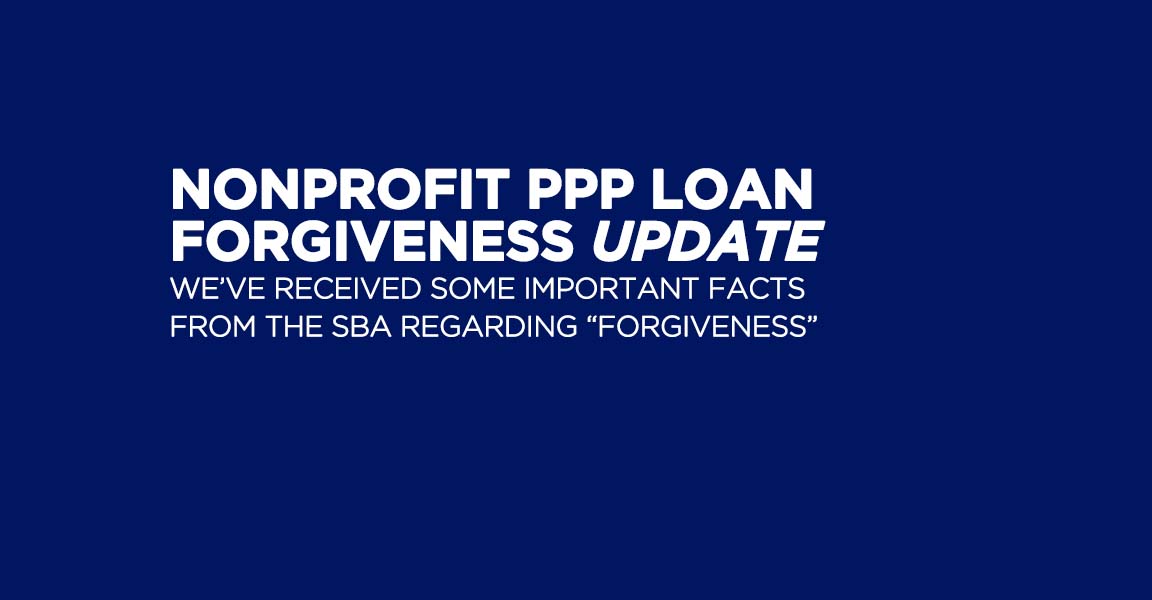
Nonprofit PPP Loan Forgiveness UPDATE – May 14, 2020
May 7, 2020A Nonprofit Guide to DIY Fundraising
May 9, 2020Nonprofit Boards – The Way We’re Working Isn’t Working

Nonprofit Boards – The Way We’re Working Isn’t Working is written by Jack Horak of The Alliance for Nonprofit Growth and Opportunity (TANGO). In this article I will make the case that, in general, nonprofit boards of directors perform at levels less rigorous than necessary to meet the challenge of the 21st century operating landscape. Another way to say it is that the nonprofit operating landscape has become excessively complicated over the last few decades, while board training, performance, and expectation levels have, in general, failed to keep pace. There is a gap between what is required of boards and what is accepted.
The operating complexity is not in dispute — its axiomatic if not “old news” at his point. The complexity is a function of the legal, regulatory, financial, legislative, contractual, bureaucratic, and service requirements that dot the sector’s operating landscape.
As far as substandard board performance is concerned, my argument is based on a comparison of what the law requires of boards of directors with the lower (diluted) performance standards that are generally accepted in the sector. As you will see, I support this argument with evidence — actual cases in which boards did not perform at the higher level required by law and fell back on the lower standard of “accepted practice.”
First, the law in question is corporate law (most modern nonprofits are organized as corporations), and corporations have a weighted dual or two part command and control system.
The first and primary part of the dual system is the board of directors. The law requires the corporation to have a board of directors, and vests the ultimate power, authority and responsibility for the organization in the board.
The second part of the dual system – is managememt – the exective staff members who are responsible for daily operations (turning the lights on and off) – but management’s authority is derived from the board of directors which, as I said above, has the ultimate power, authority and responsibility for the organization. The dual system is weighted in favor of the board of directors.
To be sure — the board needs a good management team and a good management team needs a good board. And while neither should inappropriately interfere with the other, at the end of the day the buck stops with the board.
Board service is a serious legal undertaking. If you are one of ten people serving on the board of, for example, a social services agency with revenue of $ 20 million, 300 employees, and multiple operating sites, you, in effect, control 10% of the vote that determines the fate of these activities and people.
Second, let’s look at some of the practices and expectations of board members that are customary, accepted and taught, but which are not required by the law. These are the nonprofit sector’s traditional “add-ons.”
Board members are expected to volunteer their time, to donate money each year, and to encourage others to donate. They are expected to attend and support fund raising events (golf tournaments and galas) and are told they are the organization’s “ambassadors in the community.” A 2017 Nonprofit Quarterly article stated that a principal role of the board of directors ”is to represent the public interests in the organization…. “ Board Source has a page on its website that speaks to “external responsibilities, including fundraising, advocacy, and community-building and outreach.”
There is nothing “wrong” with these accepted “soft” practices and expectations of board members — but a few points are in order:
- These practices are secondary or tertiary relative to the legal standards but are taught and practiced as primary (they are over emphasized).
- They are too subjective to provide boards with the rigorous analytical framework required for strategic practice in a complex landscape (see the examples below).
- They are collectively a “tall order” for people who are volunteers and who have outside lives to live (affecting board recruitment); and
- To the extent they dilute the governance expectations of the board they inflate (by default) the role of management, throwing the “dual system” out of balance.
Nonprofit Boards – The Way We’re Working Isn’t Working
Third, here are three examples of situations I have witnessed in which the boards did what most boards typically do – but not what they should have done. They were comfortable operating within the margins of the soft “add-on” expectation but not the more rigorous standards I discuss above.
Example one: There is an accepted general practice I have witnessed in Connecticut and elsewhere in which there is a compelling economic and business case to be made for a merger with another nonprofit – economies of scale to be realized for the benefit of the mission — but the merger does not happen because neither organizations’ CEO wants to retire and neither wants to play second fiddle to the other after a merger. The merger talks never go anywhere as a result, and the boards acquiesce to the deal falling by the wayside as they move forward.
What boards should do in these situation is exercise some board to board leadership and decide (if the merger otherwise makes sense) which of the two will be the new CEO – while simultaneously telling the departing CEO that his or her services will be needed to complete the merger successfully and that to induce cooperation the departing CEO will receive a generous severance package adequate to ease the transition, together with a recommendation and outplacement assistance. The board would understand that the amount paid to the departing CEO is worth the money — it is not an empty expense but an exchange of value – that paves the way for the economic and operational benefits of the merger.
Example Two: There is a reluctance to being confrontational with management even when a confrontation is necessary to the task at hand. A case in point involved a large social services agency CEO who had served for decades (without being formally reviewed by the board), and who, on his own initiative had for years been working from his residence in a warmer climate during the winter months (This was well before the “remote working” phenomenon we see around us today). The CEO’s practice was known to staff (but not to the public) and negatively affected morale and performance. People feared how this practice would look if it “got out.”
This is what the board should have done: commence an investigation to see how and when the practice started, review emails and call records, and interview staff to see how much work was really being done. If the amount of work that had been done was not worth the level of compensation that had been paid, the CEO should be terminated and required to pay restitution.
But what I saw happen in this and similar cases is the board falling back on the soft expectations and simply not be willing to take on the hard and confrontational work necessary to address the problem. Board members would tell me they were only volunteers, or that they did not “sign up” for something this stressful, or that they were happy to provide financial support but had their hands full at work, and so on. It was easier to simply resign than to get overly involved.
Example Three: I did some work for a nonprofit that received a respectful five figure grant from a local foundation each year, only to learn that as a condition of renewal the foundation would require it to take attendance at board meetings and provide the results to the foundation to demonstrate “adequate” board participation.
There was so much wrong with picture that it made my head spin – and it should make your heads spin too. The board members were being treated like children in middle school — and the mere fact of the attendance requirement said a lot about the accepted level of practice on the boards in the community the foundation was funding each year.
This is what nonprofit should have done (it did not): tell the foundation it was governed by a board of adults, that its track record spoke for itself, and that if the foundation was that concerned about the quality of the boards it was funding it needed to rethink its own mission and practice.
Let me close with this: I have on many occasions known and worked with nonprofits with first class fully functioning boards. There are many splendidly governed nonprofits. However, they are too few and far between – they should be the general rule and not the exception.
Nonprofit Boards – The Way We’re Working Isn’t Working was first posted at INSIDE CHARITY
For More Articles Like Nonprofit Boards – The Way We’re Working Isn’t Working VISIT HERE
